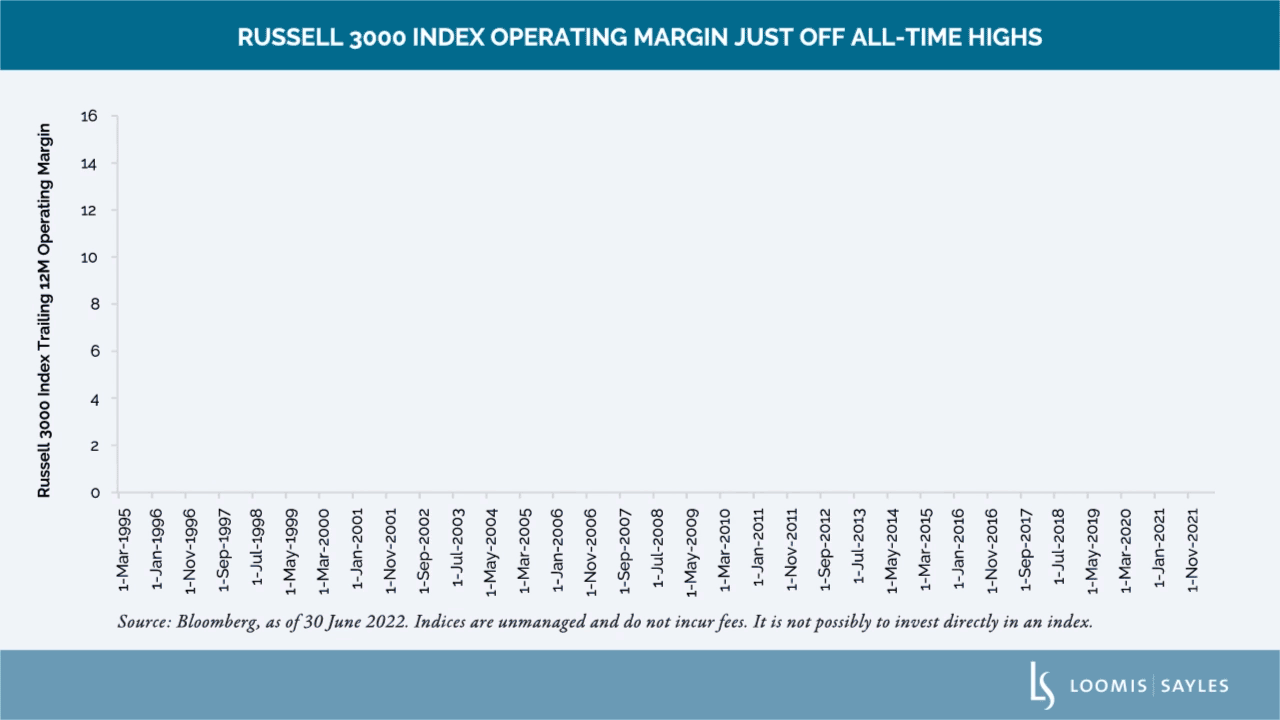Corporate fundamentals have been deteriorating in the US. Over the past six months we have seen meaningful erosion in profit margins, pricing power and the outlook for credit. The dropoff has been particularly steep in manufacturing industries. Our conclusion is based on work done by our analysts who closely follow the financials of more than two dozen industries as well as from our top-down macro research.
The US economy has been slowing, as one might expect in the late stages of an economic cycle. Signs indicating financial markets are concerned about that slowdown have not been hard to spot. The price of copper, a commodity tightly tied to the economic outlook, has fallen sharply. Yields on 10-year Treasurys have declined below yields on two-year Treasurys. And the stock market, as measured by the S&P 500, had its worst first half since 1970.
Corporations appear in a good position to weather a downturn
In our view, the market’s concerns are well-founded. The slowdown is real and we expect it to continue. Even so, we believe that corporations are in a good position to weather a downturn. Credit fundamentals will likely weaken but we do not expect them to break down or reach crisis levels.
Our view rests on a few key foundations:
- The corporate falloff is starting from high levels. One way to measure this is by looking at a chart of profit margins for the Russell 3000 Index, which represents approximately 98 percent of publicly-traded US equities. Those margins dipped slightly in the first quarter yet were still only a hair below the all-time high reached last year. We estimate profits will grow in 2022 at a mid-to-high single-digit clip. That wouldn’t come close to matching the 45 percent growth recorded in 2021, but our key point is this: by historical standards, profit margins should remain at relatively high levels, helping to put corporate America in a good position to deal with what lies ahead.

- Leverage remains manageable. In the 2007-2009 period, leverage—which we define as the ratio of debt to profits—turned a downturn into a disaster. In this economic cycle, the picture looks notably different. Companies have added debt, but many have used the long period of low interest rates to refinance that debt at relatively attractive rates for extended periods of time. The upshot: interest expense does not appear to represent a major burden for many companies, which is one reason we do not anticipate a big jump in defaults.
- Cost pressures have been high, but they appear to be easing. Until recently companies have been able to pass on much of their rising costs to consumers. That was good for profit margins even as it contributed to a higher inflation rate. Now the situation seems to be reversing. Pricing power has been weakening, according to our analysts. That will likely crimp profit margins but could set the stage for lower inflation. We expect the inflation rate to stay above the Fed’s two percent target rate through 2023, but the numbers will likely come down, easing pressures on companies, the economy and the Fed itself. In our view, falling inflation expectations on 10-year TIPS suggest financial markets see the situation much like we do.
A steady drift lower
It is worth pointing out again that while we have a relatively sanguine view of corporate health, we do see weakening ahead. We think conditions will likely get worse, but we anticipate a steady drift lower rather than a collapse. In our view, fundamentals will descend via the stairs, not the elevator.
Corporations came into this phase of the cycle with considerable strengths—high profits and manageable leverage—and will likely benefit from diminishing costs pressures. Together those elements could limit any damage the slowdown might bring.

MALR029413
Commodity, interest and derivative trading involves substantial risk of loss.





